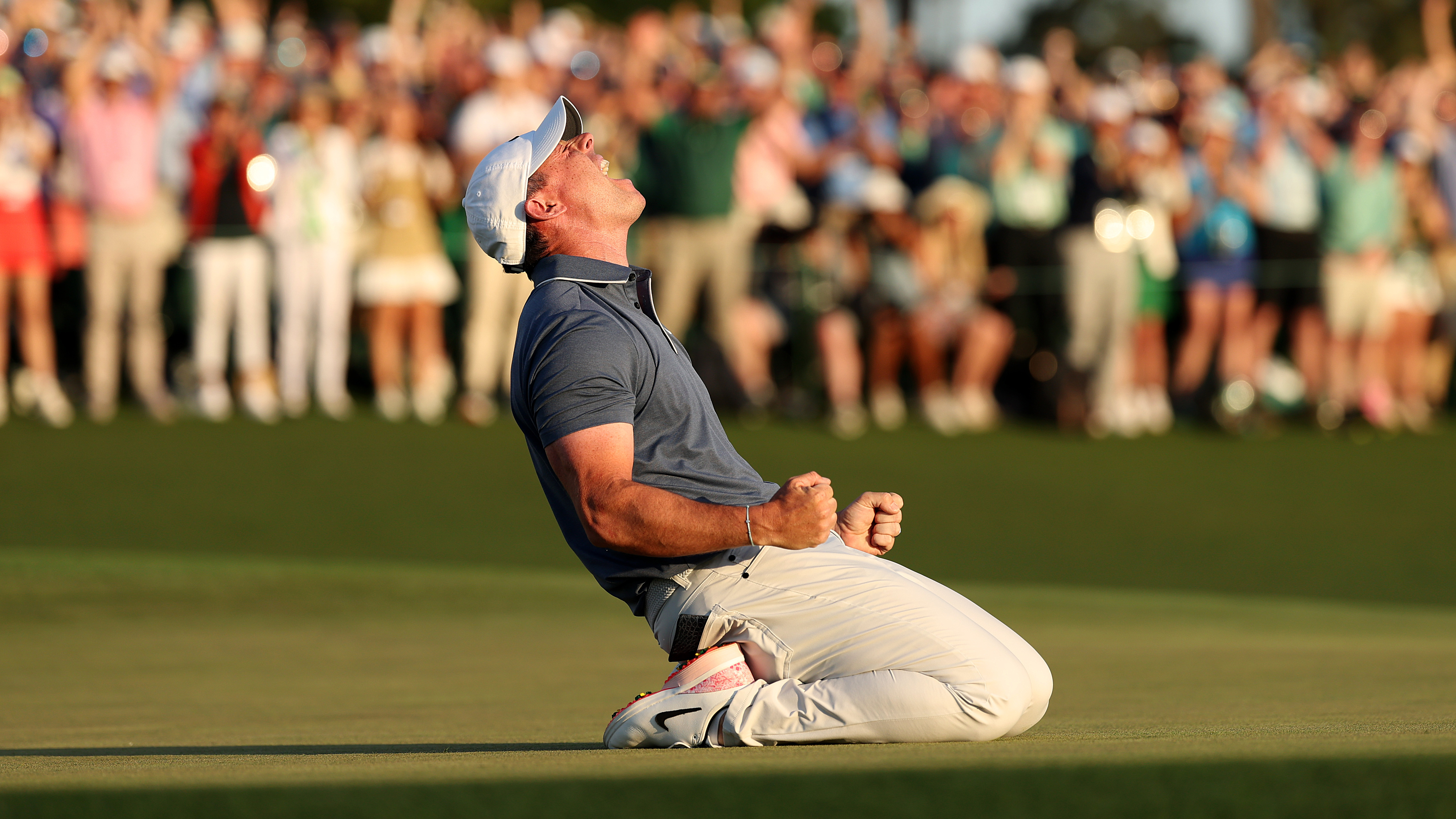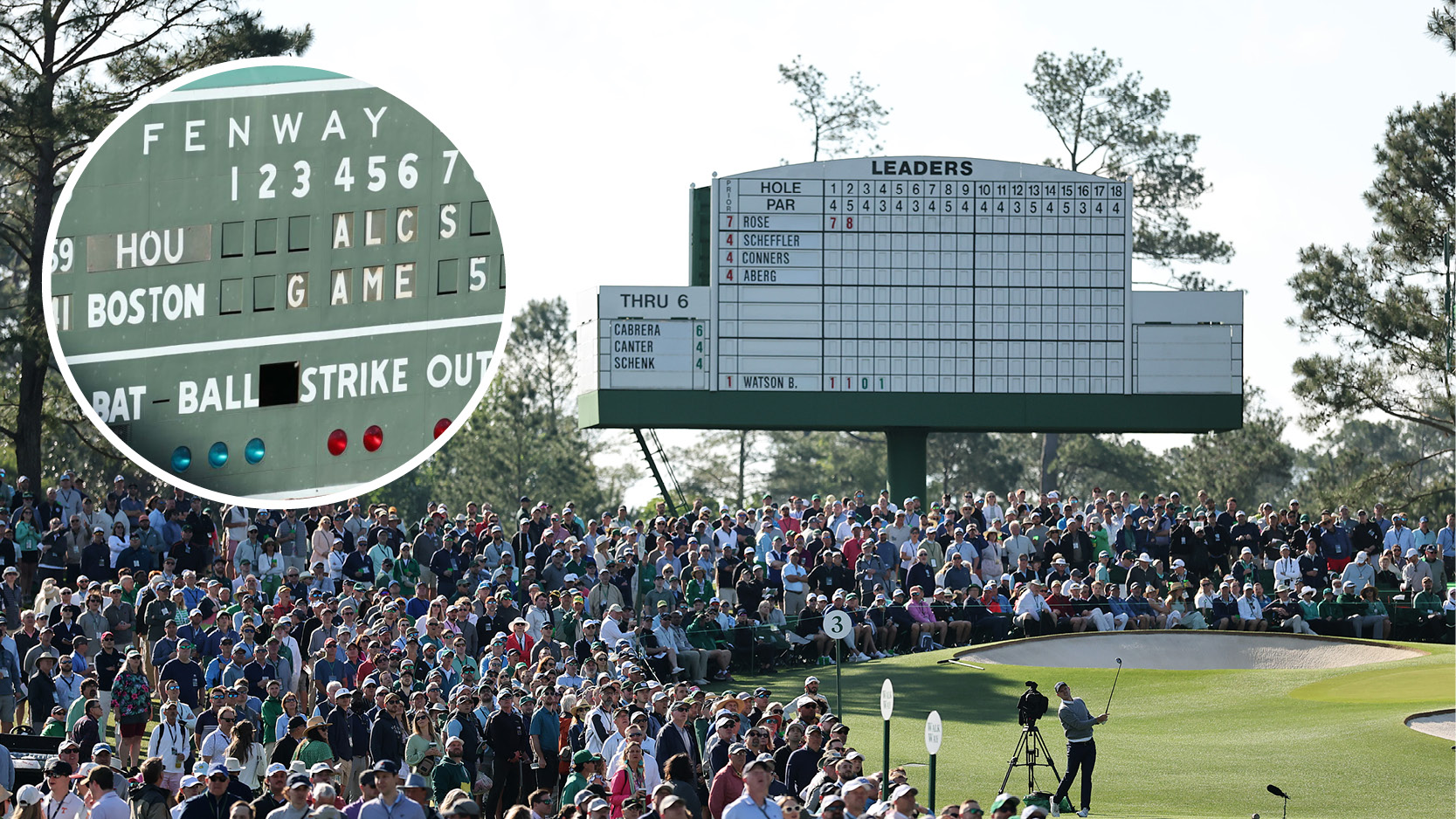Masters 2014: Augusta National hole-by-hole guide
We take an in-depth look at holes 1-18 at Augusta National - host of the Masters Tournament - in our hole-by-hole guide


We take an in-depth look at holes 1-18 at Augusta National - host of the Masters Tournament - in our hole-by-hole guide
Hole 1 – Par 4 – 445 yards
The first hole at Augusta National frequently ranks as one of the harder holes on the golf course. Players often take 3-wood off the tee to avoid a fairway bunker that lurks on the right side of the hole, some 285 yards from the tee. The fairway is narrow, the approach plays uphill and the green in surrounded by run-off areas, so par is always deemed a good score here.
Best ever score: 2 Worst ever score: 8
Hole 2 – Par 5 – 585 yards
Don’t be fooled by the yardage – every player in the field is capable of getting home in two, thanks to a sweeping downhill incline. For a change on a par 5, accuracy is more important than distance. Players have to move their ball considerably from right to left. If they carry it far enough, they’ll receive a considerable shunt forward from downslope, but anything hit too straight, or with too much shape, will find trees. From the fairway, most players will look to work their ball in from left to right – skirting the huge bunker that protects the front right of the green – although a select few will be able to carry their balls all the way onto the putting surface.
Best ever score: 2 (Louis Oosthuizen, 2011) Worst ever score: 10
Get the Golf Monthly Newsletter
Subscribe to the Golf Monthly newsletter to stay up to date with all the latest tour news, equipment news, reviews, head-to-heads and buyer’s guides from our team of experienced experts.
Hole 3 – Par 4 – 350 yards
Despite it’s meagre yardage, the third hole is no pushover. Most players hit an iron for position, although a select few opt to hit driver to get as close to the green as possible. Many prefer a full shot into the green to control their spin, but precision is absolutely vital. The green is extremely shallow and slopes severely from right to left, so anything hit too firm will fall off the back and anything too soft will spin back off the front. Even if you find the putting surface, a two-putt is by no means guaranteed.
Best ever score: 2 Worst ever score: 8
Hole 4 – Par 3 – 240 yards
The 4th is officially the hardest hole on the front nine at Augusta National. It’s a long and demanding proposition, with most players requiring a long iron or fairway metal to get home. The pin is accessible when it’s on the left side of the putting surface, but when it’s positioned back right – over a deep bunker that lurks ominously in front of the green – it’s virtually impossible to get close. Anyone recording four 3s throughout the course of the week will be delighted.
Best ever score: 1 Worst ever score: 8
Hole 5 – Par 4 – 455 yards
The fifth hole is another tough par 4 in an opening stretch that doesn’t yield a huge number of birdies. It doglegs from right to left, and cross-bunkers some 160 yards short of the green must be avoided at all costs. Approaches hit from the left of the fairway are semi-blind, with multiple humps on the green adding to the difficulty of the hole.
Best ever score: 2 Worst ever score: 8
Hole 6 – Par 3 – 180 yards
The sixth will be seen as a birdie opportunity when the pin is positioned favourably on the front left side of the green. A number of tiers populate the putting surface and the slopes can be used to the player’s advantage. That said, three-putts are commonplace when you find yourself on the wrong portion of the putting surface.
Best ever score: 1 Worst ever score: 7
Hole 7 – Par 4 – 450 yards
The par-4 7th at Augusta is one of the narrowest holes on the course. It plays slightly downhill, and most players will hit 3-wood and still leave themselves a wedge or short iron to the green. The approach is the tricky part, though, with sand completely surrounding a raised putting surface that slopes considerably from back to front.
Best ever score: 2 Worst ever score: 8
Hole 8 – Par 5 – 570 yards
The 8th isn’t the longest par 5 on the golf course, but it plays that way. It’s relatively open off the tee – with a bunker down the right the only real obstacle – but its uphill incline means it’s a genuine three-shotter for at least half of the field. The hole swings round to the left, and the bigger hitters tend to hit a sweeping hook and use the bank to the right of the green to shunt their ball towards the green.
Best ever score: 2 Worst ever score: 12
Hole 9 – Par 4 – 460 yards
Thanks to modern technology, an elevated tee and the downhill fairway camber, the 9th has been reduced to a driver and a short iron or wedge for most of the field. The difficulty comes with the approach, however. Three distinct tiers make distance control paramount, and it’s not uncommon to see balls trundling off the front of the putting surface.
Best ever score: 2 Worst ever score: 8
Hole 10 – Par 4 – 495 yards
The 10th marks the start of a treacherous run of holes, and is traditionally the hardest hole at Augusta National. Players will attempt to drive the ball in the left side of the fairway to make the green more accessible, but anything overworked – or hit too straight – will find trees. A 60 yard-long bunker lurks some way short of the green, and approaches need to be accurate to dissect the bunker and shrubbery to the right of the greed and a steep run-off area to the left.
Best ever score: 2 Worst ever score: 9
Hole 11 – Par 4 – 505 yards
The 11th is the start of the fabled Amen Corner, where many tournaments have been lost. Players drive to the top of the hill before one of the most daunting approaches in golf. An ominous pond lies in wait to the left of the green, with a closely-shaved bank ensuring anything pulled will find water. Many players understandably bail out right, but that just leaves a treacherous downhill chip towards the drink.
Best ever score: 2 Worst ever score: 9
Hole 12 – Par 3 - 155 yards
The 12th is arguably the most famous short-hole in golf. The green is only 20-feet deep and the wind is notoriously difficult to read. When the breeze is swirling, the water fronting the putting surface sees a lot of action, as does the pine straw through the back of the green; a chip back towards the water with a sand buffer is often seen as more preferable than a pitch from the drop zone. If you offered everyone in the field four pars at the 12th, not one player would turn you down.
Best ever score: 1 Worst ever score: 13
Hole 13 – Par 5 – 510 yards
The 13th marks the start of the most scoreable stretch at Augusta National, and a number of victories can be attributed to low scoring from holes 13-17. This is another tee shot that requires a right-to-left ball flight, with many players choosing to hit 3-wood to impart more spin on the ball. Every player will be able to reach in two, although an uneven stance for the second, the Rae’s Creek-fronted putting surface and bunkers behind the green certainly give players something to think about. That said, you’ll see more eagles here than double-bogeys.
Best ever score: 2 Worst ever score: 13
Hole 14 – Par 4 – 440 yards
The 14th is the only hole at Augusta National without a bunker, but it’s one of the toughest green complexes on the golf course. That said, many players will view the 14th as a birdie hole, especially when the pin is in a favourable position. Most of the field will be coming in with a wedge or short-iron, and a birdie here can really help build momentum before the reachable par-5 15th, which is cumulatively the easiest hole on the course.
Best ever score: 8 Worst ever score: 2
Hole 15 – Par 5 – 530 yards
The par-5 15th is traditionally the easiest hole at Augusta National, with an all-time average of 4.78. Tee shots play significantly downhill and balls often take a big skip forward off the downslope, which is more pronounced the further drives are hit. The longest hitters will only a require a mid-iron to reach the green in two, and even the shortest hitters can get home, should they wish. The 15th is not without bite, though. A pond fronting the green captures numerous balls during tournament week, whether that’s misjudged second shots or wedge approaches spinning off the green.
Best ever score: 2 (Gene Sarazen, 1935) Worst ever score: 11
Hole 16 – Par 3 – 170 yards
The difficulty of the 16th hole is entirely dependant on the pin position. It’s only a mid-iron, but it’s extremely difficult to get close when the flag is perched just over sand on the right side of the green. A huge ridge runs through the middle of the green, so when the flag is on the lower portion (normally on Thursday and Sunday) players can aim 20 feet right and let the slope do its work. It’s normally a pivotal hole come Sunday afternoon and 15 hole-in-ones have been recorded here since the Masters began.
Best ever score: 1 Worst ever score: 14 (Billy Casper, unofficial)
Hole 17 – Par 4 – 440 yards
The 17th shares many characteristics with the 14th, most notably its straight, narrow shape and severely sloping putting surface. After a well-placed drive, a mid to short-iron remains to a green that is shaped like an upturned bowl. Distance control is key on approaches, as balls often spin back off the front of the green. A notable absentee this year is The Eisenhower Tree, which came down during relentless storms this February.
Best ever score: 2 Worst ever score: 7
Hole 18 – Par 4 – 465 yards
If you miss the fairway on the 18th you’ll be struggling for bogey; if you find the fairway it’s a genuine birdie chance. Drives need to be worked off a bunker that sits on the apex of the slight dogleg right to open up the green. After a good tee shot, 150-180 yards remain to a tiered putting surface that’s some 30 yards from back to front. The pin is most accessible when it’s in a slight depression in the middle of the putting surface, and a shelf beyond the flag can be used to draw the ball back towards the hole.
Best ever score: 2 Worst ever score: 8

In July 2023, Neil became just the 9th editor in Golf Monthly's 112-year history. Originally working with the best coaches in the UK to produce instruction content, he has also presented many Golf Monthly videos looking at all areas of the game from Tour player interviews to the rules of golf.
Throughout his time with the brand he has also covered equipment launches that date back well over a decade. He clearly remembers the launch of the Callaway and Nike square drivers as well as the white TaylorMade driver families, such as the RocketBallz! If you take a look at the Golf Monthly YouTube channel, you'll see his equipment videos dating back over a decade! He has also conducted 'What's In The Bag' interviews with many of the game's best players like Rory McIlroy, Dustin Johnson and Jon Rahm. Over the years, Neil has tested a vast array of products in each category and at drastically different price-points.
Neil is currently playing: Driver: TaylorMade Stealth Plus Fairway Wood: Titleist TSR2 Hybrid: Titleist TS3 Irons: PING Blueprint S (4&5), PING Blueprint T (6-PW) Wedges: Titleist Vokey SM7 50˚, 54˚, 60˚ Putter: Odyssey Triple Track Ten Ball: Titleist Pro V1X
-
 Rory McIlroy Wins The Masters In Playoff To Complete Career Grand Slam
Rory McIlroy Wins The Masters In Playoff To Complete Career Grand SlamThe Northern Irishman battled past Ryder Cup teammate, Justin Rose to finally seal his first Masters title and become the sixth man to win all four men's Majors
By Jonny Leighfield Published
-
 Did You Know The Masters Leaderboard Was Inspired By Fenway Park?
Did You Know The Masters Leaderboard Was Inspired By Fenway Park?The Masters leaderboards are an iconic and historic part of the Augusta National Major, but did you know about its origins and how it operates today?
By Matt Cradock Published